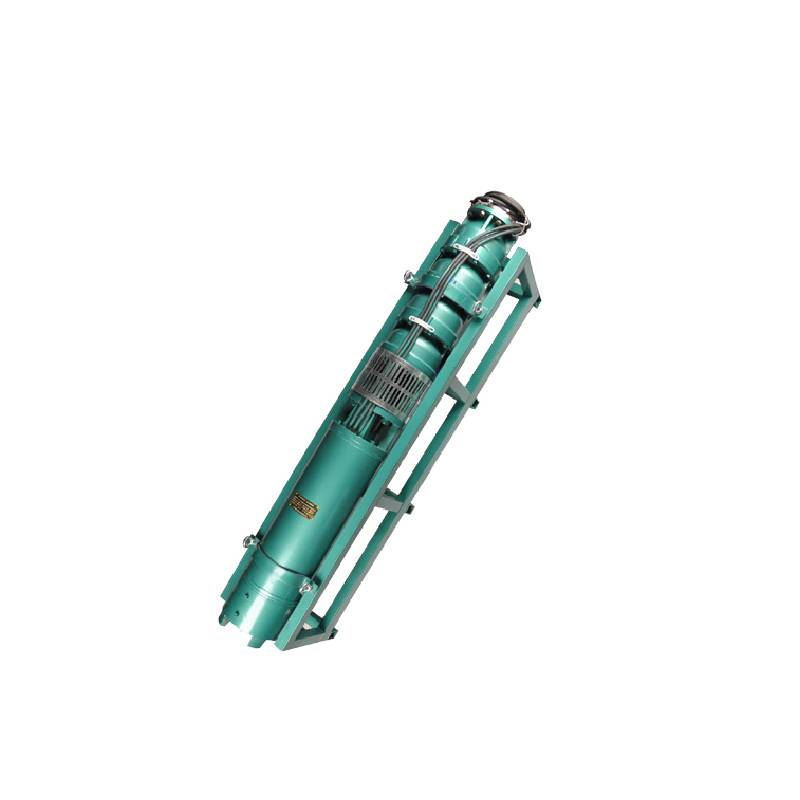Sep . 10, 2024 18:46 Back to list
12/2 submersible pump wire
Understanding 12/2 Submersible Pump Wire Key Considerations for Installation and Use
When it comes to powering submersible pumps, the choice of wire is fundamental to both the performance and longevity of the system. Among various wire types, the 12/2 submersible pump wire has gained popularity for its robust design and reliable performance in submerged environments. This article will explore what 12/2 submersible pump wire is, its specifications, applications, and key considerations when installing or maintaining your submersible pump.
What is 12/2 Submersible Pump Wire?
The term 12/2 refers to the gauge and the number of conductors in the wire. In this case, 12 indicates that the wire has a gauge of 12, which means it is relatively thicker than smaller gauges. Thicker wire can carry more current, making it suitable for handling the higher electrical loads associated with submersible pumps. The 2 denotes that the wire consists of two conductors one for the supply of power and the other for the return path.
The wire is also typically insulated with materials that can resist moisture and chemical degradation. Common insulation materials used in submersible pump wires include PVC (Polyvinyl Chloride) and other robust thermoplastics. These materials ensure that the wires remain functional even when submerged in water for extended periods.
Specifications and Features
1. Current Carrying Capacity The 12-gauge wire can typically handle a current of up to 20 amps, making it ideal for small to medium-sized submersible pumps. The actual carrying capacity may vary based on factors such as ambient temperature and installation conditions.
2. Voltage Rating Most 12/2 submersible pump wires are rated for 600 volts, which is well within the range required for most residential and agricultural pumps.
3. Water Resistance A characteristic feature of submersible pump wire is its resistance to water and various chemicals. This quality is crucial for preventing short circuits and ensuring safety during operation.
4. Heat Resistance As with many electrical installations, heat can be a significant concern. The high-quality insulation on the wires helps in dissipating heat, thereby reducing the risk of overheating.
Applications
12/2 submersible pump wire

12/2 submersible pump wires are commonly used in various applications, including
- Residential Water Supply Many homeowners rely on submersible pumps for their well water systems. The 12/2 wire provides a reliable power source for these essential systems.
- Irrigation Systems Agricultural applications benefit from submersible pumps used for irrigation, where reliable and consistent water supply is crucial.
- Pond and Fountain Pumps Decorative water features often use submersible pumps that require adequate wiring to maintain their performance.
Installation Considerations
When installing a 12/2 submersible pump wire, several factors should be taken into account
1. Depth of Installation Ensure that the wire is long enough to reach the pump at the required depth. Always plan for additional length to accommodate any future adjustments.
2. Connections Use watertight connectors to prevent water ingress at junction points. Proper sealing is vital to ensure the longevity of the electrical connections.
3. Local Codes Always adhere to local electrical codes and regulations when installing submersible pump wiring. This ensures safety and compliance with established standards.
Conclusion
Choosing the right wire for your submersible pump is essential for ensuring its efficient and safe operation. The 12/2 submersible pump wire offers excellent performance characteristics for various applications, from residential to agricultural uses. By paying close attention to installation practices and the wire’s specifications, users can maximize the effectiveness and lifespan of their submersible pumps.
-
Submersible Water Pump: The Efficient 'Power Pioneer' of the Underwater World
NewsJul.01,2025
-
Submersible Pond Pump: The Hidden Guardian of Water Landscape Ecology
NewsJul.01,2025
-
Stainless Well Pump: A Reliable and Durable Pumping Main Force
NewsJul.01,2025
-
Stainless Steel Submersible Pump: An Efficient and Versatile Tool for Underwater Operations
NewsJul.01,2025
-
Deep Well Submersible Pump: An Efficient 'Sucker' of Groundwater Sources
NewsJul.01,2025
-
Deep Water Well Pump: An Efficient 'Sucker' of Groundwater Sources
NewsJul.01,2025
-
 Submersible Water Pump: The Efficient 'Power Pioneer' of the Underwater WorldIn the field of hydraulic equipment, the Submersible Water Pump has become the core equipment for underwater operations and water resource transportation due to its unique design and excellent performance.Detail
Submersible Water Pump: The Efficient 'Power Pioneer' of the Underwater WorldIn the field of hydraulic equipment, the Submersible Water Pump has become the core equipment for underwater operations and water resource transportation due to its unique design and excellent performance.Detail -
 Submersible Pond Pump: The Hidden Guardian of Water Landscape EcologyIn courtyard landscapes, ecological ponds, and even small-scale water conservancy projects, there is a silent yet indispensable equipment - the Submersible Pond Pump.Detail
Submersible Pond Pump: The Hidden Guardian of Water Landscape EcologyIn courtyard landscapes, ecological ponds, and even small-scale water conservancy projects, there is a silent yet indispensable equipment - the Submersible Pond Pump.Detail -
 Stainless Well Pump: A Reliable and Durable Pumping Main ForceIn the field of water resource transportation, Stainless Well Pump has become the core equipment for various pumping scenarios with its excellent performance and reliable quality.Detail
Stainless Well Pump: A Reliable and Durable Pumping Main ForceIn the field of water resource transportation, Stainless Well Pump has become the core equipment for various pumping scenarios with its excellent performance and reliable quality.Detail
